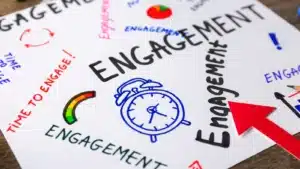
1:1 Meeting Templates That Build Trust and Boost Team Dialogue
Creating an environment of trust and open dialogue within teams is essential for fostering collaboration and productivity. One effective way to achieve this is through well-structured 1:1 meetings. These meetings not only provide a platform for discussing individual progress and challenges but also strengthen relationships between team members. Below, various templates and strategies are explored to enhance the effectiveness of 1:1 meetings.
The Importance of 1:1 Meetings
1:1 meetings serve as a vital communication tool within organizations. They provide a dedicated time for team members to connect, share feedback, and discuss personal and professional growth. When conducted effectively, these meetings can significantly boost morale and engagement, leading to improved team performance.
Moreover, regular 1:1s can help identify potential issues before they escalate, ensuring that team members feel supported and valued. This proactive approach fosters a culture of trust, where employees feel comfortable sharing their thoughts and concerns. By making these meetings a priority, organizations can cultivate a more cohesive team dynamic, ultimately enhancing collaboration and innovation.
Building Trust Through Consistency
Consistency is key in establishing trust during 1:1 meetings. Scheduling these meetings regularly, be it weekly, bi-weekly, or monthly, ensures that team members know they have a dedicated time to discuss their thoughts and feelings. This predictability can alleviate anxiety and encourage open dialogue. Furthermore, the regularity of these interactions helps to reinforce the commitment of leadership to their team’s well-being, signaling that every member’s input is valued.
Additionally, maintaining a structured agenda for each meeting can help keep the conversation focused and productive. A template that includes discussion points such as progress updates, challenges faced, and future goals can guide the conversation while allowing flexibility for spontaneous topics. This structure not only enhances the efficiency of the meetings but also empowers employees to prepare adequately, ensuring that they can make the most of the time spent with their manager.
Creating a Safe Space for Dialogue
To foster an environment where team members feel safe to express their thoughts, it’s crucial to establish ground rules that promote respect and confidentiality. Encouraging active listening and validating each person’s input can help create a supportive atmosphere. In addition, leaders should model vulnerability by sharing their own challenges and experiences, which can help to break down barriers and encourage team members to open up.
Moreover, using tools that facilitate anonymous feedback, such as SMS engagement platforms, can further enhance the openness of discussions. For instance, platforms like PresEngage allow team members to ask questions or provide feedback in real-time, ensuring that all voices are heard without the fear of judgment. This capability not only enriches the dialogue but also empowers employees to contribute more freely, knowing their thoughts can be shared without direct attribution. Such mechanisms can lead to richer insights and a deeper understanding of team dynamics, ultimately driving continuous improvement within the organization.
Essential 1:1 Meeting Templates
Utilizing templates for 1:1 meetings can streamline the process and ensure that important topics are covered. Below are several templates that can be adapted to suit the needs of different teams and individuals. These templates serve as a foundation, allowing for flexibility and personalization based on the unique dynamics of each team member.
Template 1: Progress and Goals
This template focuses on reviewing past performance and setting future objectives. It encourages team members to reflect on their achievements and identify areas for improvement. By fostering a culture of accountability, this template helps to ensure that everyone is aligned with the team’s goals and vision.
- Introduction: Briefly discuss any personal updates or news.
- Progress Review: What accomplishments have you achieved since our last meeting?
- Challenges: What obstacles have you encountered, and how can I assist you?
- Future Goals: What are your goals for the upcoming period?
- Feedback: Is there anything you would like to discuss regarding team dynamics or processes?
This structured approach not only keeps the meeting focused but also ensures that both parties leave with a clear understanding of expectations and support needed. Additionally, it can be beneficial to incorporate a section for celebrating successes, no matter how small, as this can boost morale and motivate team members to continue striving for excellence.
Template 2: Feedback and Development
This template is designed to facilitate discussions around performance feedback and professional development. It encourages constructive dialogue that can lead to personal growth. By creating an open environment for feedback, team members can feel more comfortable sharing their thoughts and suggestions, which can ultimately enhance team collaboration.
- Introduction: Share any positive news or achievements from the week.
- Feedback: What feedback do you have for me, and what feedback can I provide you?
- Development Opportunities: Are there skills or areas you wish to develop further?
- Support Needed: How can I support your development goals?
- Wrap-Up: Summarize key takeaways and set a follow-up plan.
By focusing on feedback and development, this template helps create a culture of continuous improvement, where team members feel empowered to grow and learn. Moreover, regular check-ins on development goals can help to reinforce a growth mindset, encouraging individuals to pursue new challenges and expand their skill sets.
Template 3: Personal Check-In
This template prioritizes the well-being of team members, allowing for personal discussions that can impact work performance. It emphasizes the importance of mental health and work-life balance. In today’s fast-paced work environment, acknowledging the personal lives of team members can significantly enhance their overall job satisfaction and productivity.
- Introduction: How have you been feeling lately, both personally and professionally?
- Work-Life Balance: Are you managing to balance your work and personal life effectively?
- Support: Is there anything you need from me or the team to help you feel more balanced?
- Future Plans: What are your plans for the upcoming weeks, and how can we accommodate them?
- Closing: Any other topics you would like to discuss?
This approach not only builds trust but also demonstrates a genuine concern for the well-being of team members, which can lead to increased loyalty and job satisfaction. Furthermore, integrating wellness resources or activities into these discussions can provide additional support, helping team members to navigate their personal challenges while remaining engaged and productive at work.
Enhancing Engagement with Technology
In today’s digital age, leveraging technology can significantly enhance the effectiveness of 1:1 meetings. Tools that facilitate real-time interaction and feedback can transform these meetings into dynamic conversations. With the right technology, the traditional one-on-one format can evolve from a simple check-in to a powerful platform for collaboration and innovation.

Utilizing SMS Engagement Platforms
Platforms like PresEngage can be particularly beneficial in 1:1 meetings. By allowing team members to send questions or feedback via SMS, these tools eliminate barriers to communication. Team members can engage without needing to download apps or create accounts, making participation seamless. This ease of access is especially important in diverse teams where not everyone may be tech-savvy or comfortable with complex software.
This level of accessibility encourages more honest and spontaneous dialogue, as team members can express their thoughts in real-time. Furthermore, the AI-powered Q&A feature can provide immediate answers to questions, ensuring that discussions remain productive and focused. This instant feedback loop not only enhances engagement but also empowers employees to take ownership of their contributions, leading to a more invested workforce. Additionally, the anonymity that SMS platforms can provide may encourage team members to voice concerns or suggestions they might hesitate to share in a more formal setting.
Integrating Analytics for Continuous Improvement
Another advantage of using technology in 1:1 meetings is the ability to collect and analyze engagement data. By tracking metrics such as conversation volume and participant feedback, managers can gain insights into the effectiveness of their meetings. This data can reveal patterns in communication styles, highlight areas where team members may feel less engaged, and identify topics that resonate most with participants.
These analytics can inform future discussions, helping to tailor the agenda to address common challenges or concerns. This data-driven approach ensures that meetings evolve to meet the needs of the team, fostering a culture of continuous improvement. Moreover, by sharing insights derived from these analytics with the team, managers can create a sense of transparency and collaboration, reinforcing the notion that everyone’s input is valued. This not only enhances the quality of future meetings but also strengthens team cohesion, as members feel more connected to the overall goals and direction of their work environment.
Best Practices for Effective 1:1 Meetings
To maximize the benefits of 1:1 meetings, consider implementing the following best practices:
1. Prepare Ahead of Time
Both the manager and the team member should come prepared with topics to discuss. This preparation can lead to more productive conversations and ensure that important issues are addressed. Setting a regular agenda can also help streamline the process, allowing participants to focus on the most pressing matters. Additionally, reviewing notes from previous meetings can provide context and continuity, making it easier to track progress over time.
2. Foster Open Communication
Encourage team members to share their thoughts openly. This can be achieved by asking open-ended questions and actively listening to their responses. Acknowledging their input can further enhance trust and dialogue. Creating a safe space for discussion is crucial; managers can do this by expressing vulnerability, sharing their own challenges, and demonstrating that feedback is valued. This approach not only empowers employees but also cultivates a culture of transparency within the team.
3. Follow Up After Meetings
After each meeting, send a summary of key points discussed and any action items. This follow-up helps reinforce accountability and ensures that both parties are aligned on next steps. Additionally, consider scheduling a brief check-in before the next 1:1 to address any immediate concerns that may arise. This ongoing communication can help maintain momentum and demonstrate a commitment to continuous improvement, ultimately leading to a more engaged and motivated team.
4. Set Clear Goals and Expectations
Establishing clear goals and expectations during 1:1 meetings can provide direction and purpose for both the manager and the team member. Discussing short-term and long-term objectives not only clarifies priorities but also allows for the identification of any obstacles that may hinder progress. Regularly revisiting these goals can help keep the team aligned and focused, while also providing opportunities to celebrate achievements and milestones along the way.
5. Create a Feedback Loop
Incorporating a feedback loop into your 1:1 meetings can significantly enhance team dynamics. Encourage team members to provide feedback on the meeting structure itself, as well as on broader team processes and dynamics. This reciprocal feedback not only fosters a sense of ownership but also helps managers identify areas for improvement in their leadership style. By making feedback a two-way street, both parties can grow and adapt, leading to a more cohesive and effective working relationship.
Elevate Every Conversation
1:1 meetings are a powerful tool for building trust and enhancing dialogue within teams. By utilizing structured templates, leveraging technology, and adhering to best practices, organizations can transform these meetings into impactful conversations that drive engagement and productivity.
Ultimately, the goal is to create an environment where team members feel valued and heard, paving the way for a more collaborative and successful workplace. Start implementing these strategies today to see a positive shift in your team dynamics and overall performance.
For those looking to enhance their presentation skills and engage their audience effectively, consider exploring tools like PresEngage. With its AI-powered Q&A and seamless SMS integration, it can elevate your presentations to new heights.
Take Your 1:1 Meetings to the Next Level with PresEngage
Ready to enhance the trust and dialogue in your team meetings? With PresEngage, you can bring the power of AI-driven engagement to your 1:1 sessions. Our unique SMS Q&A platform allows for instant, real-time interaction, ensuring every team member’s voice is heard without the need for additional apps or setups. Whether you’re a presenter, educator, or business professional, PresEngage is designed to make your meetings more interactive and productive. Start for FREE today and experience a seamless way to connect and engage with your team.
Present Smarter. Engage Answer Convert Close Remarkably.
Dazzle your audience with Real-Time Q&A powered by your AI Co-Presenter.(Patent Pending)
PresEngage™ makes you look brilliant by connecting with everyone, instantly.
No Credit Card Required. 100% Risk Free.
Frictionless Audience Experience GUARANTEED.






